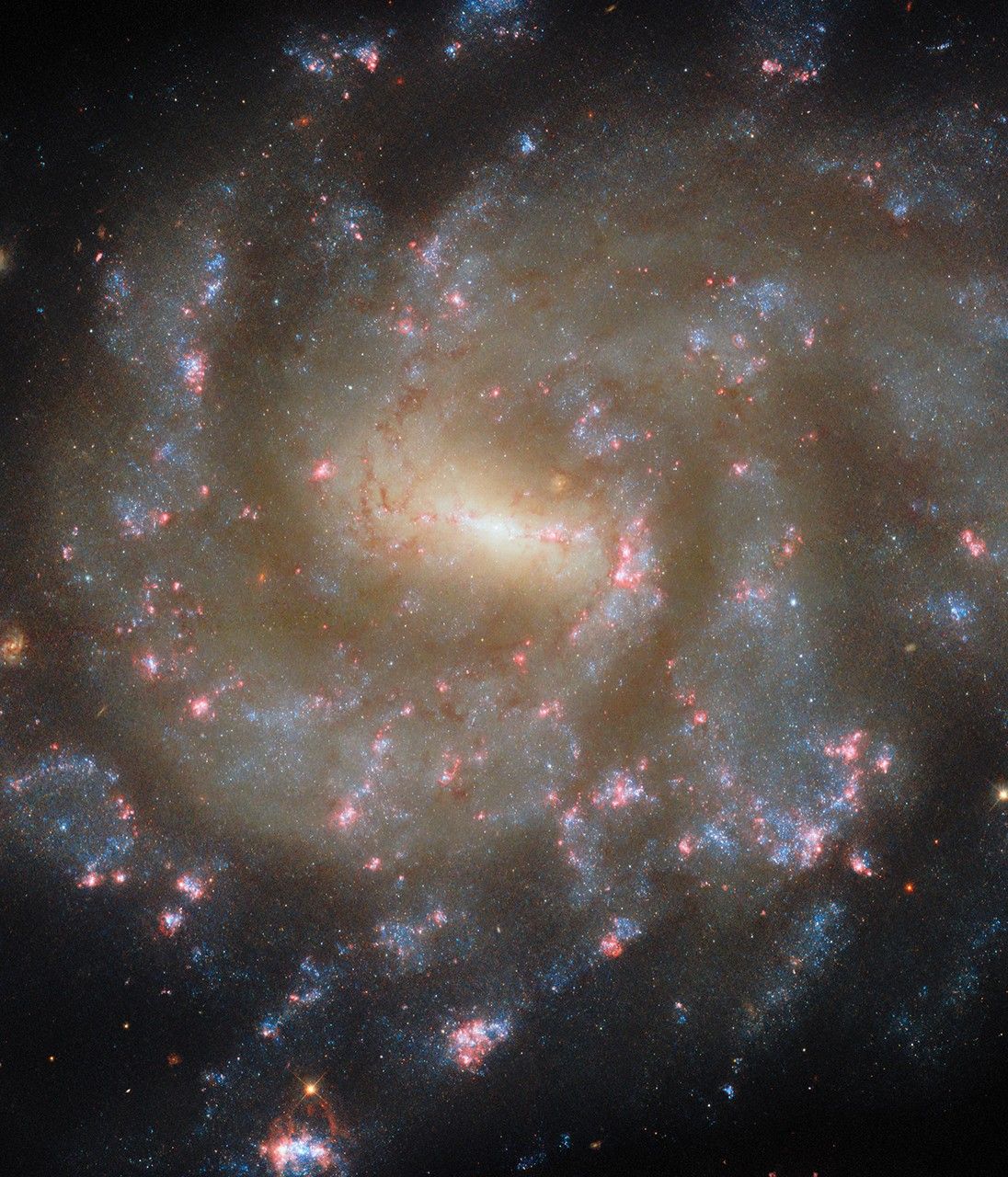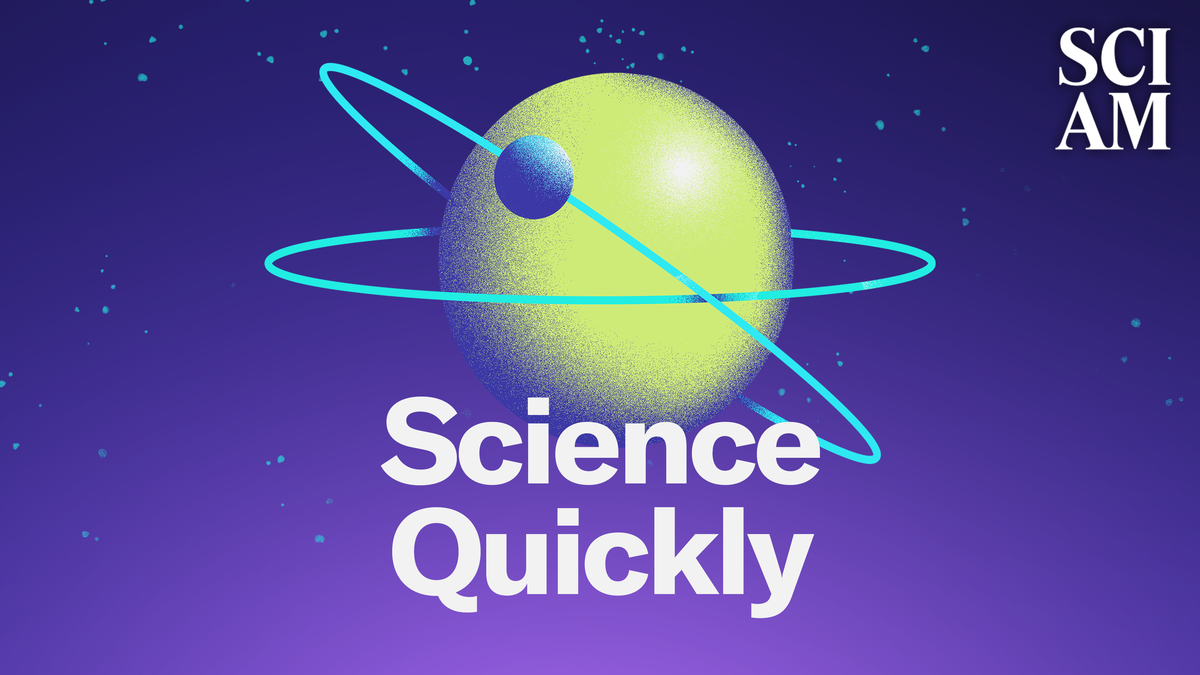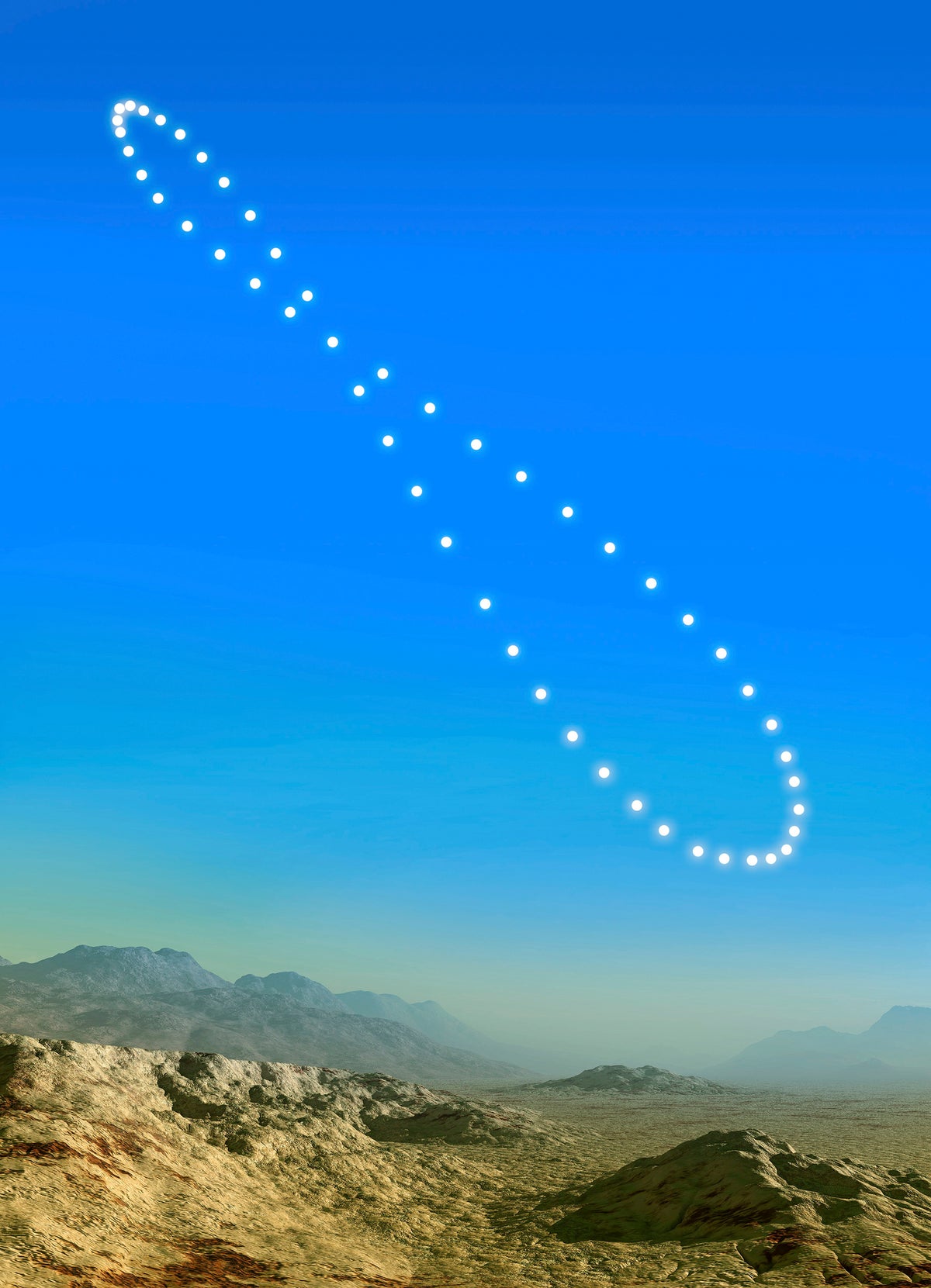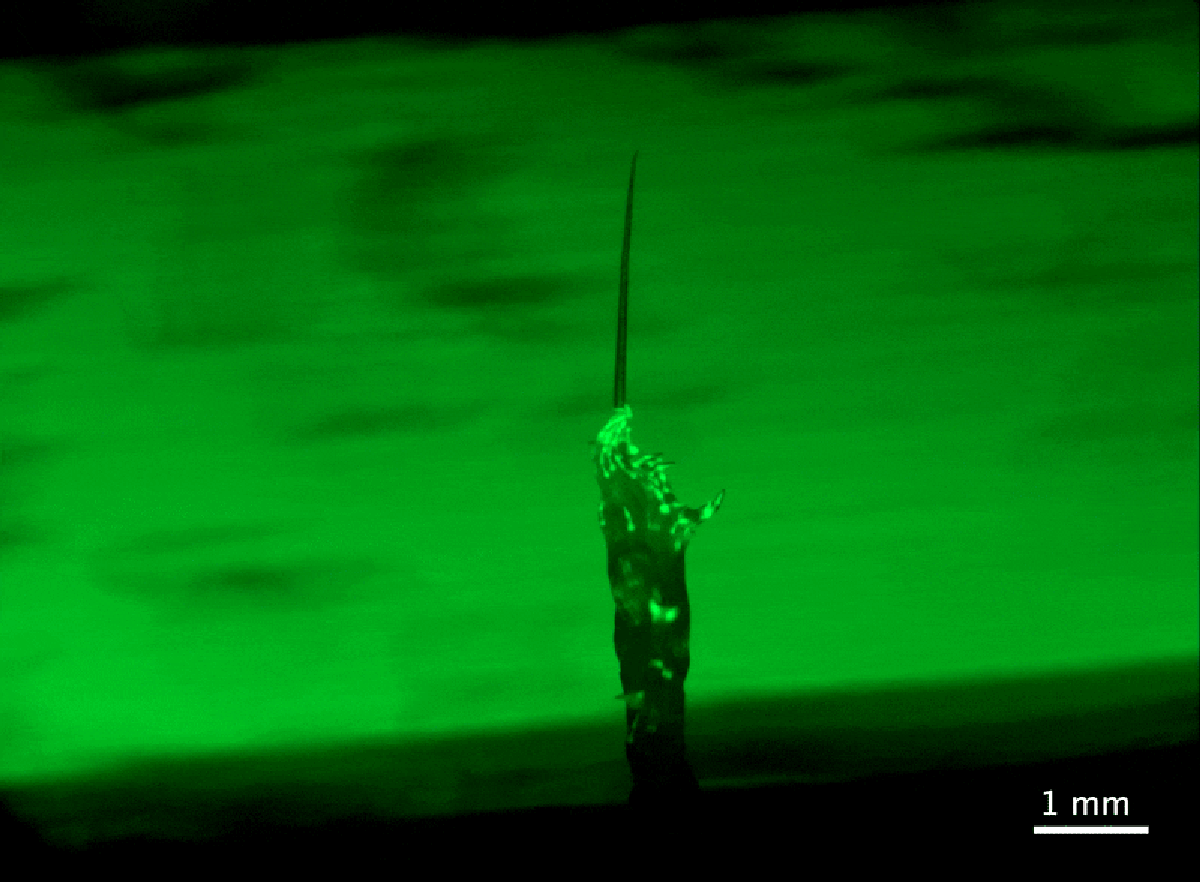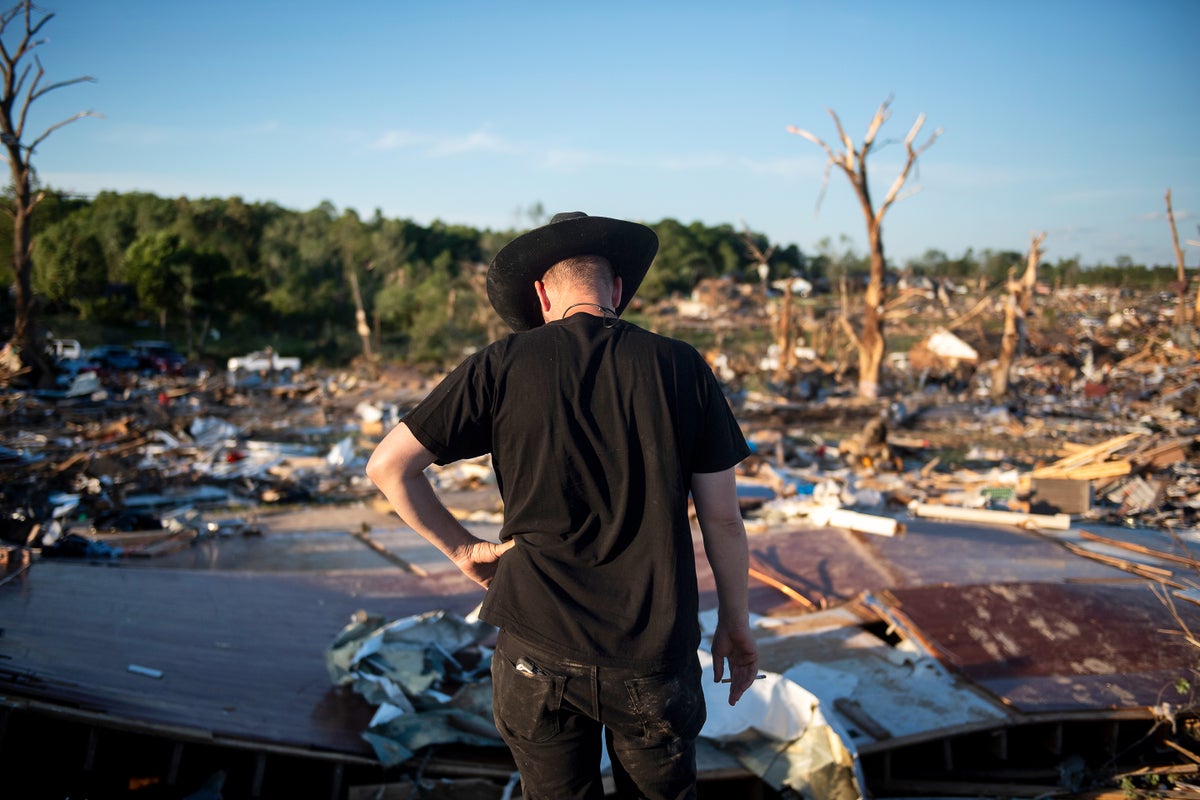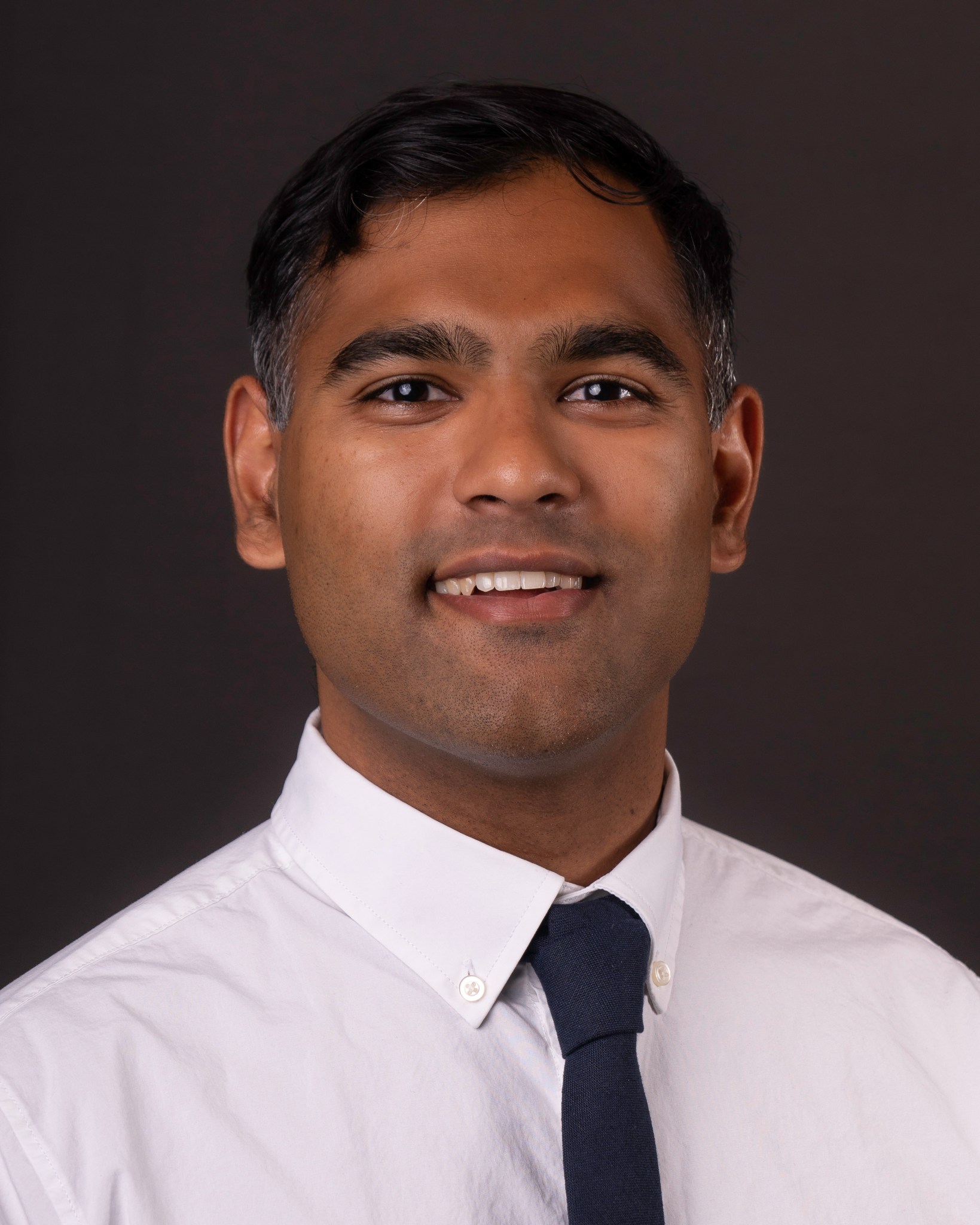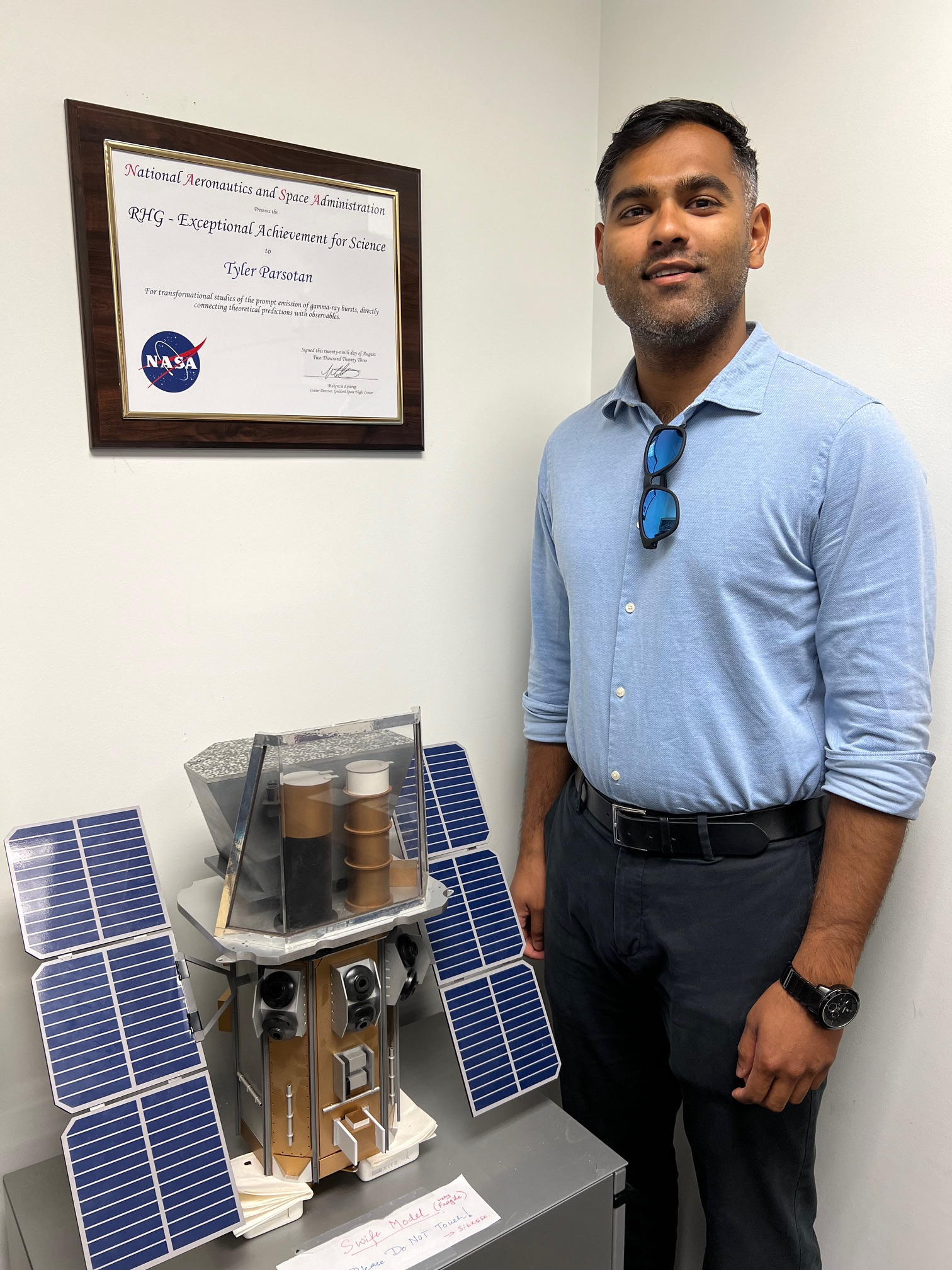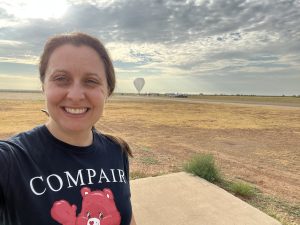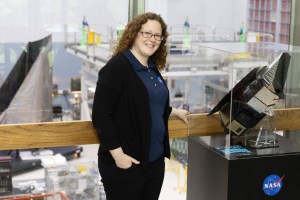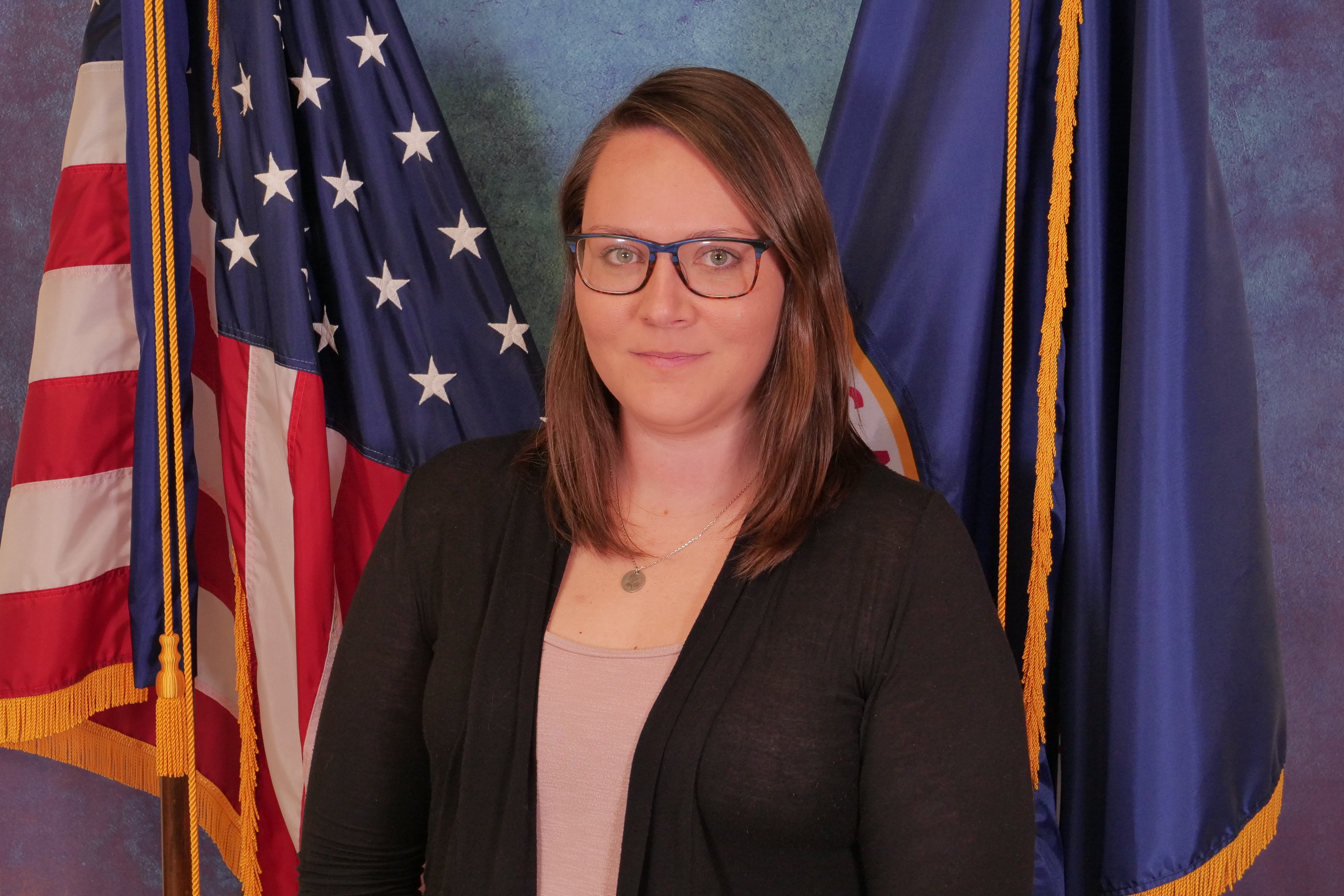Tyler Parsotan Takes a Long Look at the Transient Universe with NASA’s Swift
Through a nonlinear path to success, research astrophysicist Tyler Parsotan discovers transformational science using Swift’s observations. Name: Tyler ParsotanFormal Job Classification: Research astrophysicistOrganization: Astroparticle Physics Laboratory (Code 661), Astrophysics Science Division, Sciences and Exploration Directorate What do you do and what is most interesting about your role here at Goddard? I help operate the Burst Alert […]
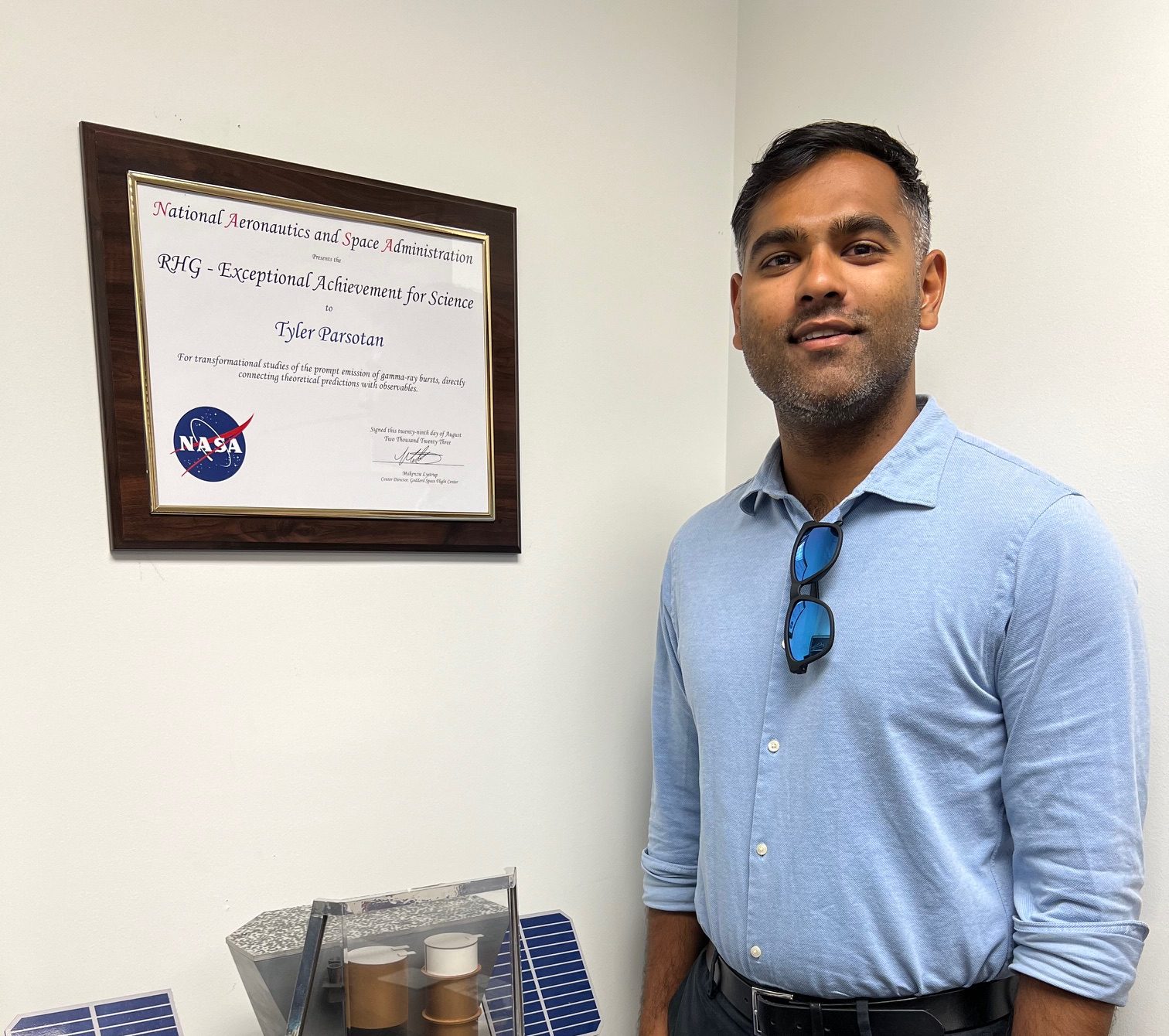
Through a nonlinear path to success, research astrophysicist Tyler Parsotan discovers transformational science using Swift’s observations.
Name: Tyler Parsotan
Formal Job Classification: Research astrophysicist
Organization: Astroparticle Physics Laboratory (Code 661), Astrophysics Science Division, Sciences and Exploration Directorate
What do you do and what is most interesting about your role here at Goddard?
I help operate the Burst Alert Telescope on board the Neil Gehrels Swift Observatory to study some of the most powerful astrophysical processes in the universe. What is most interesting is the engineering capabilities that have gone into the spacecraft to make it nimble and robust, allowing it to conduct a wide range of transformative science.
Why did you become an astrophysicist?
Ever since I was young, I was fascinated with the stars and how the world worked. All of this led me to physics with a focus on astrophysics. That is how I got into what I am doing now.
What is your educational background?
In 2015, I got a Bachelor of Science in space physics from Embry Riddle Aeronautical University in Daytona Beach, Florida. In 2019, I got a master’s in physics from Oregon State University, Corvallis, and in 2020 I got a master’s in mechanical engineering also from Oregon State University. In 2021, I got a doctorate in physics from Oregon State University.
When I first applied to graduate school, I did not get into any. I was fortunate enough to learn about Oregon State University though a program geared towards allowing underrepresented students in STEM fields to get graduate degrees. This program, known as the Ronald E. McNair Post-baccalaureate Achievement Program, played a pivotal role in me being able to attend graduate school .
Are you also a pilot?
Yes, I am. While I was in Oregon as a graduate student, I was able to save up enough money to get my private pilot’s license over the course of one summer from the local Corvallis airport. I would bike to the airport and get in a plane to fly all over Oregon from the coast to the Cascade Mountains. It was a very cool experience.
How did you come to Goddard?
I did a post-doctorate fellowship starting the fall of 2021 through May 2023. My doctoral research was related to one of Swift’s many science focuses, so I wanted to continue my work at Goddard.
What transformational science have you been involved with using Swift’s observations?
Some of the science that Swift focuses on is related to the transient universe, meaning that we primarily look at astrophysical events that come and go very quickly and typically produce a ton of energy. Swift examines the light energy produced from black holes, the majority of which are eating mass from black stars.
While at Oregon State University, I studied the most energetic events in the universe known as gamma-ray bursts. I am now studying gamma-ray bursts at Goddard. One of the big discoveries made by Swift is that these gamma ray bursts can be seen out to early times in the universe. Some of these explosions occurred when the universe was very young, only 100,000 years old or so. Because the universe is expanding, it takes that light some time to travel to us. With Swift, we detect that light and can make some measurements about the gamma-ray bursts, such as when they occurred, how much energy they produced in these massive explosions, and some of the properties of the early universe.
What is the biggest discovery you have been involved with and what do you love most about working on Swift?
We are simulating the gamma-ray bursts, which was a focus of my doctorate. We cannot yet actually see these explosions, so we have to simulate them using the physics that we now know. I have been able to connect some of the large simulations to the Swift observations and measurements. This helps us better understand the underlying physics of these powerful explosions.
The amount of energy produced in a typical gamma-ray burst is enough to blow up the Sun a few times over.
Lots of people know about Hubble, which observes the light that we can see with our eyes. The light that I deal with, gamma rays, has much higher energy and cannot be seen with our eyes. We have to use different techniques to measure this light. Designing detectors to measure this light is challenging technically but means that this area of physics is ripe for discovery. I love being part of this.
Swift will be 20 years old in November 2024. As a relative newcomer to Swift, what are your thoughts?
I think Swift is a great observatory because it has conducted lots of transformational science, drastically expanding our knowledge of the cosmos. Even though it is getting older, it is still able to push science forward in new and exciting ways. I am looking forward to helping the Swift mission celebrate 20 years of amazing science.
What is your advice to anyone starting and continuing a career?
There are no linear paths to success. Keep looking for a way to be successful. This advice applies to life overall.
Are you involved in any of Goddard’s extracurricular activities?
I recently joined Goddard’s soccer league. Everyone at Goddard self organizes into teams that play each other after work during the week. We play about a game a week. The winning team gets bragging rights. I mostly play defense. Being on a team is a good way to meet people at Goddard and to stay active.
In addition to soccer, what are your hobbies?
I enjoy hiking, mountain biking, and generally being outdoors.
Where do you see yourself in five years?
I hope to still be at Goddard. I enjoy the type of work and the overall work environment. If Swift continues another five years, hopefully I’ll be working on it and also helping to create the next generation of gamma-ray observatories to help push science forward. We are making the science that will be in the next textbooks.
Who do you want to thank?
My doctoral supervisor Davide Lazzati was an extremely supportive mentor and pushed me to be the best scientist that I can be. Since I arrived at Goddard, we have been good colleagues.
My former mentor and supervisor at Goddard is Brad Cenko, the Swift principal investigator. I am grateful that he hired me and allowed me to grow as a post-doctoral researcher.
I also want to thank my entire family for being extremely supportive and understanding even though they may not fully understand what I really do.
Who is your science hero?
Copernicus. He put forward the theory that our solar system orbits the Sun. He was obviously very instrumental in changing the way we think about the cosmos. He got into a lot of trouble with his theory, which makes his accomplishments all the more important.
By Elizabeth M. Jarrell
NASA’s Goddard Space Flight Center, Greenbelt, Md.
Conversations With Goddard is a collection of Q&A profiles highlighting the breadth and depth of NASA’s Goddard Space Flight Center’s talented and diverse workforce. The Conversations have been published twice a month on average since May 2011. Read past editions on Goddard’s “Our People” webpage.
Share
Details
Related Terms
What's Your Reaction?









